Above the ocean: the world of marine drone
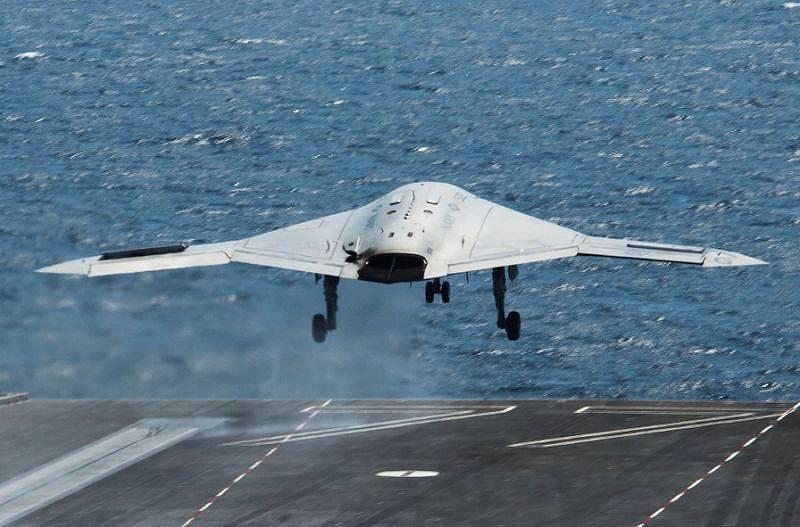
While unmanned aerial vehicles are mainly used by the air force and to a lesser extent by the ground forces, naval forces are looking more closely at them, although their adoption is accompanied by a number of specific problems.
The ultimate goal of maritime operations is to deploy drones from ships for surveillance in close proximity or for air patrols in remote areas, either independently or in conjunction with manned vehicles. Aircraft and helicopter-type UAVs are most suitable for such tasks, ranging from helicopter-sized systems, such as Northrop Grumman's MQ-8B / C Fire Scout, to aircraft-type UAVs, such as ScanEagle and RQ-21A Blackjack from Boeing / lnsitu . Although all of the above devices are operated by the US Navy, there is also a process of improving the systems developed in Europe and Israel, which attract the interest of military sailors of their own and foreign countries.
A major problem is the integration of the UAV in the ship itself, however, as well as the task of developing a system adapted to work at sea. As a rule, helicopter-type UAVs, which borrow the appropriate technology from deck helicopters, are used to support offshore operations. Rotary wing UAVs are also easier to integrate with the ship than their counterparts in the aircraft scheme, since they, with their vertical take-off and landing, require less deck space. However, in recent years, much has been done from a technological point of view for embedding aircraft of new types in deck operations.
Work on the aircraft carrier
One of these technological tricks was the successful landing with the help of an aerofiner of the prototype of the X-47В drone drone Unmanned Combat Air Vehicle (UCAV) from Northrop Grumman on the deck of the George Bush carrier of the Nimitz class in May 2013. In 2014, flight tests followed, demonstrating the ability of the X-47В to take off in conjunction with the F / A-18C / D Hornet fighter aircraft from the deck of another Nimitz-class aircraft carrier, Theodore Roosevelt. The last success of the X-47B program was the demonstration of the drone's ability to refuel from the OmegaAir Boeing B2015-707 aircraft tanker in 320, after which the American fleet closed this project and transferred all the experience gained to the CBARS program (see below). The initiative is now complete, and the Navy maintains two X-47Vs in flight for further research and testing.
The X-47B drone is refueled from the OmegaAir B707-320 tanker, an important step in the development of UAV capabilities
To this end, the fleet began implementing a program for an airborne refueling system based on an aircraft carrier called the CBARS (Carrier-Based Aerial Refuelling System), in accordance with which it will purchase the MQ-25 Stingray UAV. Four contractors, Boeing, General Atomics, Lockheed Martin, and Northrop Grumman, have applied for an aircraft for this program: Northrop Grumman with an X-47B based UAV, Boeing with a Phantom Ray based UAV, Lockheed Martin with its Sea Ghost and General Atomics with Sea Avenger. All four companies were selected for UAV operations under the previous UCLASS (Unmanned Carrier-Launched Airborne Surveillance and Strike) program. As part of the UCLASS project, an inconspicuous strike UAV was developed, but, ultimately, all the work on it was reduced to the CBARS project. Despite the desire fleet to achieve a practical result, the schedule of work under the UCLASS program was constantly shifting to the right, since the fleet found it difficult to determine what it wants from a deck-based UAV with a small effective scattering surface (EPR). It turned out that reducing the EPR is not such an easy task, and therefore the fleet redefined the program’s tasks, renamed it the CBARS program, in which it proceeded to develop a refueling system to expand the range of tasks performed by F / A-18E / F Super Hornet fighters aircraft carriers. This year, a request for proposals for the next stage of work was published, which provides for the final completion and preparation of production, as well as work to reduce the risks that each company must fulfill in order to finalize its applications rather under the CBARS project, rather than under UCLASS. Ultimately, the MQ-25 will turn into a surveillance system that can function as a tanker. The Cobham A / A42R-1 air refueling system will be installed on the drone, which is installed on F / A-18 family fighters of the US Navy and Marine Corps. According to the US Navy, the first MQ-25 drone will go into service, most likely, in the early 2020s.
Rotorcraft
One of the systems successfully operating in marine conditions is the Schiebel Camcopter S-100 UAV of a helicopter type. The company has recently achieved some success by selling one such test complex in Australia this February, since the country's fleet has a great desire to accept unmanned aerial vehicles. A Schiebel spokesman said on this occasion that “One such S-100 complex, which the Australian fleet ordered, consists of two aircraft. The contract, recently concluded with the fleet, also includes engineering support and logistics in the next three years. ” It was difficult to fight for a contract with the fleet, as other manufacturers also wanted to sell their systems to Canberra. Among the applicants was UMS Skeldar with its rotorcraft V-200 UAV. Its distinctive feature is a multi-fuel engine that can also work on marine diesel fuel, which, according to UMS Skeldar, will make the device attractive to the Australian fleet. A diesel engine is an important argument ceteris paribus, since the drone can run on the same fuel as the ship and its aviation technology, while diesel is also safer to operate because it has a higher flash point compared to aviation fuels. “It is well known that in order to work on a ship, this unmanned vehicle must run on diesel fuel,” said David Willems, director of UMS Skeldar. - S-100 does not work on diesel fuel and this is a significant drawback of this model. We believe that in addition to these tests, our V-200 system will still have many opportunities to show itself, since it is excellent for working on surface ships and offshore platforms. "
UMS Skeldar succeeded when its V-200 system was chosen by Indonesia for testing and evaluation in anticipation of potential orders.
Another market in which these companies compete is Germany, which for several years has been in search of a rotor wing UAV for integration with the ships of the German fleet. The company UMS Skeldar has teamed up with the company ESG in order to enter the market and soon expects some progress in the program of the German fleet. “Our relationship with ESG is important on a number of levels, not least because it’s the main contractor for a number of projects,” Willems said. “We are working with them on the VorUMAS program (the new name for the procurement program of the helicopter drones for the German fleet).” He added that the request for proposals on the requirements of the German fleet is inevitable. In addition, he said that he was not entitled to discuss any details, but there are a number of other possibilities that his company hopes for in Germany.
Meanwhile, a representative of Schiebel, predicting the opening of the tender of the German fleet, noted the following: “We will be able to convince the German fleet that our S-100 is the best option when it comes to deck vertical take-off and landing vehicles”. Skeldar also relies on its share of the German market, but is also active in other countries. At the end of 2015, a company was established that united assets across unmanned systems from Saab and UMS. This successful marketing move contributed to the recent success of Skeldar, which sold its first system in Indonesia in February 2017. One V-200 system was sold for an assessment that, according to the company, will ultimately lead to the sale of several more systems to Indonesia. “The V-200 platform shows itself well in testing and in carrying out patrol missions,” Willems added. -
The ability to carry a different payload, a relatively small amount of maintenance and logistics, the uniformity of ground control stations and the ability to work on diesel fuel. Our Indonesian customer appreciated the benefits and therefore speaks very positively about this system. ”
Willems added that interest in UAVs is increasing year by year and their rapid development in the military, maritime and civilian sectors means that the need for unmanned aircraft is greater than ever. “Each of our platforms can carry different payloads, that is, they can be used at any time to perform a variety of tasks. In this regard, our customers receive huge benefits ... In addition, we constantly conduct research and development based on future needs. We will make significant changes in the next two years. ” The company is also promoting its smaller R-350 helicopter UAV to the marine drone market, which, according to Willem, will be the first UAV ideally suited for naval forces. “This could lead to the deployment of other ship-based platforms, for example, V-200. However, at this stage I can’t say anything about potential customers. ”
General Atomics has offered a modification of its Predator-C UAV for the UCLASS program of the US Navy, which has now been transformed into an MQ-25 project, which is developing an unmanned tanker
India can also become a major customer of UMS Skeldar, which therefore works with its local partner, 3F-Advanced Systems, to organize several demonstration tests in this country. “We expect the first sales in the military sector,” Willems said. “Therefore, we intend to start assembling V-200 systems for the Indian market, and then, based on the necessary volumes, to organize their production at a local enterprise.” After joining the Missile Technology Control Regime in 2016, which allows member countries to export UAVs and missile technologies that have a payload of more than 500 kg and a range of 300 km, India opened as a new huge market for various types of UAVs. After joining the Missile Technology Control Organization, the government of India in June 2016 published a request to the United States to approve the purchase of General Atomics unmanned Guardian drones for the Indian Navy to the US (Guardian is a maritime version of the omnipresent Predator UAV family). General Atomics does not comment on this possible sale to India, and the US Congress has not yet approved the deal.
General Dynamics seeks to enter the market of marine UAVs, offering new opportunities, for example, the integration of the sonar into the Guardian on-board equipment, which it is developing in conjunction with Ultra Electronics. This will undoubtedly increase the efficiency of this drone when performing tasks in marine conditions. Other integrated systems for maritime use include X-band X-band (7500-8,5 GHz) Seaspray-10,68E radar from Leonardo and Automatic Identification System AIS interrogators. The radio frequency transponder AIS, installed on all ships with a gross register capacity of more than 300 tons, provides information on the identification, heading and speed of the vessel.
In addition, the company participates in the development of the MQ-25 project, which, if implemented, will allow General Dynamics to deliver its systems to the US Navy for the first time, because its Predator UAV family had been successful in the US Air Force, MQ-1 Predator and MQ-9 Reaper, and in the army, where for several years now the MQ-1C Gray Eagle has been serving. The company General Atomics intends to offer for the program MQ-25 jet version of the drone based on the Predator-C Avenger. Platforms for aircraft carriers is a new direction for the company, despite the successful line of MALE UAVs (medium altitude, long endurance - medium-altitude with a long flight duration), which are in service with several NATO countries.
IAI says they are adapting their basic UAV Heron to offshore operations, including the installation of specialized radar, radio intelligence systems and long-distance communications systems.
Israeli genius
Israel Aerospace Industries (IAI) is also developing offshore versions of the Heron drones, including a diesel-powered version, although none of them are suitable for service on an aircraft carrier. The Super Heron variant, first presented at the Singapore Air Show in 2014, was developed as a proposal for the Swiss requirement, which ultimately won the rival Elbit Systems with its UAV Hermes-900, although IAI still offers its system on the market. “Super Heron, being one of the Heron variants, is suitable for any task, including sea,” said Dan Beechman, head of the UAV unit in the IAI division. - The Heron family is constantly being improved in many aspects ... Super Heron is designed for UAV operators who need a system with improved capabilities and a diesel engine. The system will suit customers from any country. ” In addition, Bichman noted that the basic version of the Heron family can be easily modified to install the necessary systems and target load, which will allow adapting it to the sea tasks. “In this way, you can easily transform any Heron base drone into a marine Heron by installing the appropriate systems and equipment.”
Such a payload may include one of the surveillance radars for sea patrols developed by IAI ELTA, for example, X-band ELM-2022ES radar, Micro Pop optocoupler from IAI Tamam plus electronic intelligence sensors, for example, EL / L-8385 from IAI ELTA. In addition, the satellite communications system from IAI ELTA will help to work at long distances over 1000 km, as well as at low altitudes, if there is such an operational need. “The Heron Marine UAV has been operated by various operators for many years, including the Israeli fleet,” Bichman said. “The Heron UAV is a multitasking system with a long duration of flight, which is suitable for a wide range of operational tasks at different heights and distances, and is capable of operating in extreme weather conditions.” IAI and Elbit Systems are not the only Israelis who offer marine drones. In 2010, the Israeli Navy chose Aeronautics Orbiter-2 UAVs to work with surface vessels, for example, Sa'ar-5 corvettes. According to the company, this unit, capable of carrying a target load of 1,5 kg, has a range of 100 km and a flight duration of up to 4 hours.
Leonardo tested a number of systems onboard the S-100 UAV, including the PicoSAR radar, which might be of interest to the Australian fleet.
Feel the problem
As for the ability to act in support of marine tasks, not only the platforms, but also the sensors that they carry on board are extremely important here. “This combination of platform and sensor is very attractive to customers because it provides coverage of a wide area in almost any weather,” said a Schiebel representative talking about the integrated sensor / platform solution. Leonardo has achieved a lot in this area, having successfully tested the systems onboard the S-100 UAV and obtained a very prestigious contract for the integration of the Osprey X-band surveillance radar into the drone MQ-8С. As mentioned earlier, Australia bought one S-100 complex, but no sensors have been selected for it yet. In 2015, Leonardo demonstrated its survey radar aboard the S-100 to the fleet of this country and, therefore, the chances of success are quite high.
The Osprey radar is delivered through the US government for installation on the MQ-8С drone of the American fleet. “We are now executing a contract, delivering on schedule, and working with our Fire Scout partners to successfully complete it,” said Brendan Nolan, head of aerospace systems at Leonardo, adding that the fleet is considering issuing a contract shipments to get more sales. “Our main goal is delivery under the contract that we won. Of course, we are ready to support the US Navy or the Northrop Grumman company in any of their export activities, but at the moment we are focused on supplies for this program. ”
Nolan said that the Osprey radar "is undoubtedly a breakthrough" compared to previous-generation radars with fixed antenna arrays. “Two antennas are mounted on the sides of the Fire Scout drone, which gives 240 degrees coverage without any moving parts. Thus, the radar design does not allow it to be installed under the helicopter's hull, as is often the case, which is an advantage during high seas, ”continued Nolan, recalling that the active phased array antenna (AFAR) allows the operator to simultaneously perform many tasks . “You can direct the radar with AFAR anywhere where it can physically see it. For example, to steer forward to obtain information about weather conditions, simultaneously map the target zones to the right and simultaneously look out for air threats to the left. “The characteristics of the Osprey radar are very well suited for unskilled operations. You can do a lot with this lightweight system, so it’s perfect for UAVs, ”Nolan added.
Advantages are obvious
Indeed, as noted in the article, the American fleet has made great strides in deploying UAVs to perform sea tasks. However, other technologically advanced countries are also making great efforts in this direction. The problems associated with the operation of any system in marine conditions, not to mention unmanned, are enormous, but the industry is developing a number of technologies that will improve efficiency in this area. The increased level of security compared to manned platforms, because the number of flight crews is at risk when conducting combat missions, plus a reduction in costs, because the valuable time of pilots is not used - well, the advantages of using UAVs for sea tasks are obvious, and, as a result, a number of countries slowly but surely deploying more and more unmanned systems on its ships.
On the materials of the sites:
www.nationaldefensemagazine.org
www.northropgrumman.com
www.navy.mil
schiebel.net
umsskeldar.aero
www.ga.com
www.gd.com
www.iai.co.il
www.leonardocompany.com
www.wikipedia.org
www.teinteresa.es
army-news.ru
avia-simply.ru
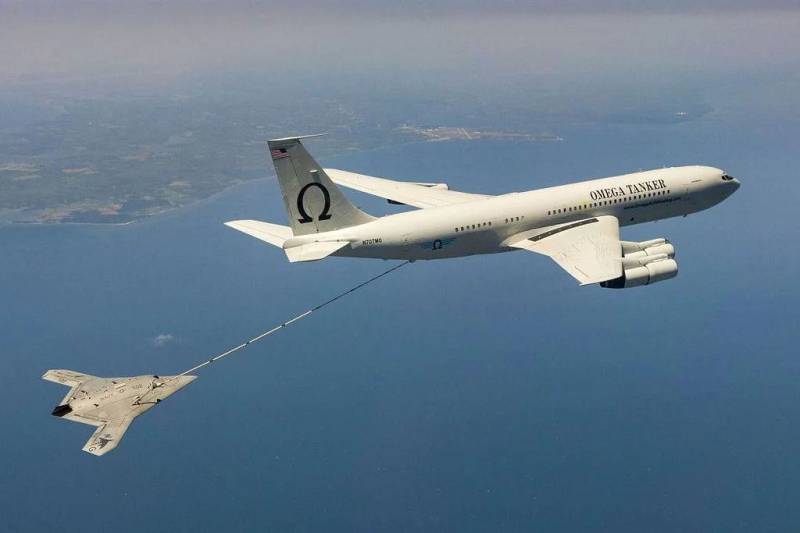
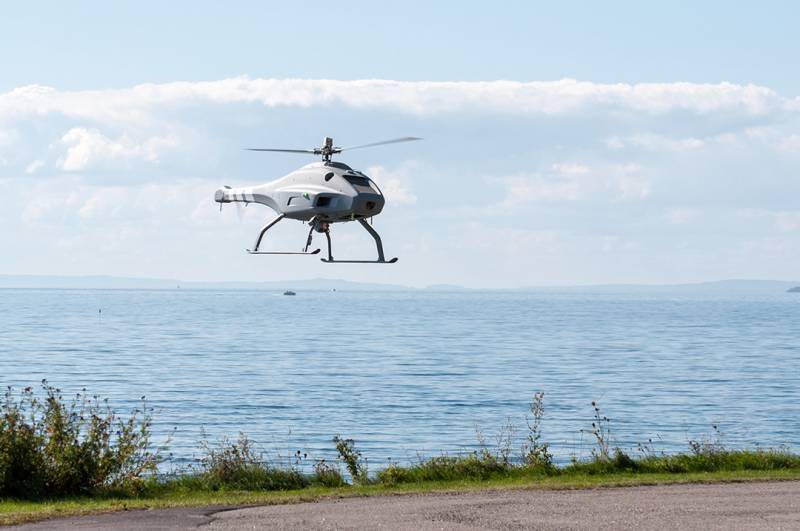
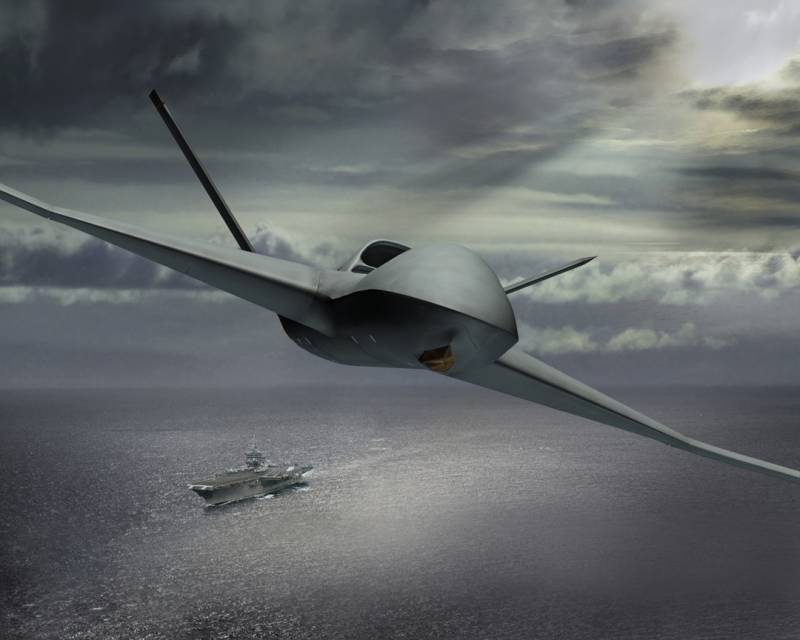
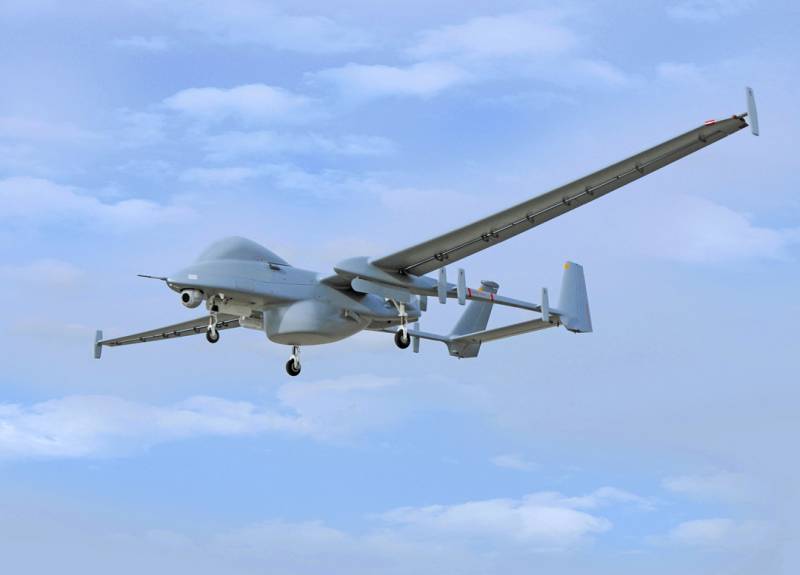
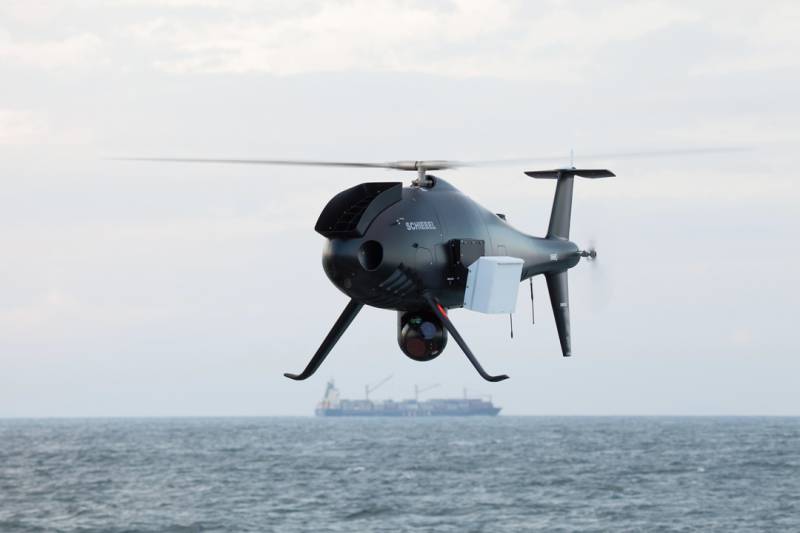
Information